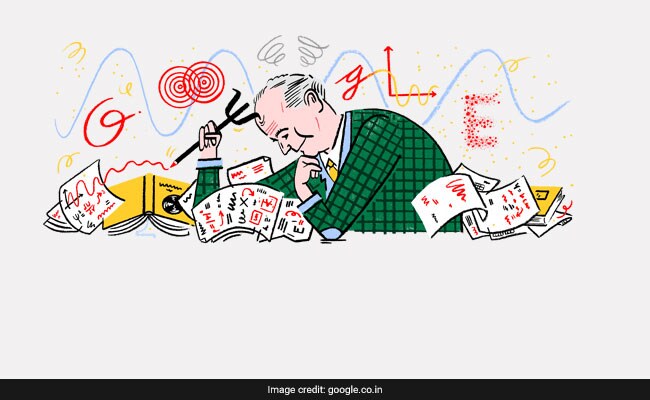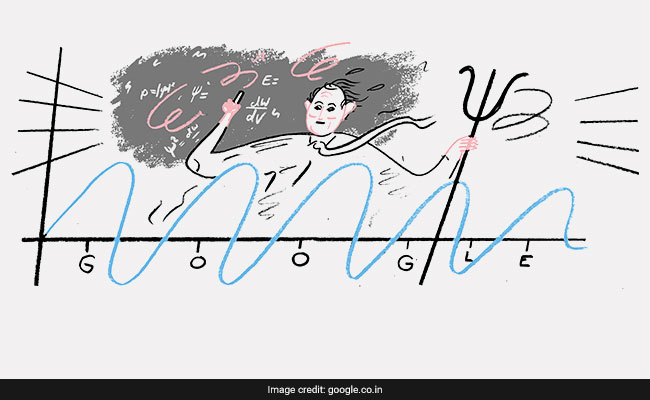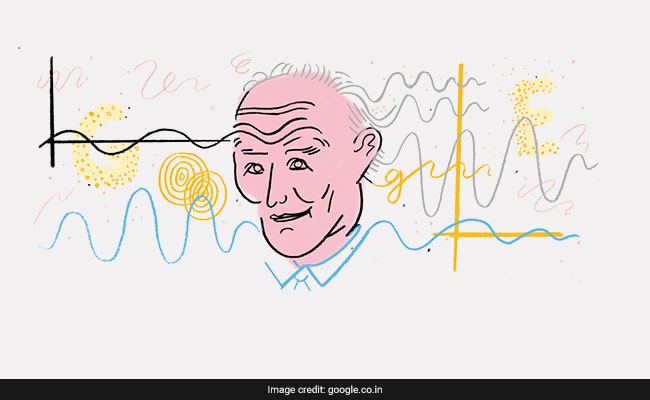
Google Doodle: Without Max Born's research in quantum mechanics, modern inventions wouldn't be possible
Today's Google Doodle celebrates the 135th birthday of Max Born. Without Max Born's development of the field of Quantum mechanics, today's modern world would perhaps not have been the same. Quantum mechanics is a part of physics which studies matter at the smallest form possible. Without quantum mechanics, advancements in medicine (including inventions like Medical Imaging Devices or MRIs), lasers and personal computing would have remained a dream. And this is where Max Born, who was a German physicist and mathematician, played a huge role in making these inventions a reality. His contributions were recognized when he was awarded the Nobel Prize for Physics in 1954.
Max Born was born on the 11th of December in 1882 in Breslau, which used to be a part of the German Empire, but is now a part of Poland. He studied at the University of Breslau and obtained his Ph.D at Gottingen University, where he went on to become a professor of theoretical physics.
 Unfortunately, with the rise of Nazism in Germany, Dr Born was forced to escape from Germany in 1933 and emigrate to Britain. In Britain, Dr Born became the Tait Professor of Natural Philosophy at the University of Edinburgh and continued to hold onto his post till he retired in 1954, which was when he was awarded the Nobel Prize.
Unfortunately, with the rise of Nazism in Germany, Dr Born was forced to escape from Germany in 1933 and emigrate to Britain. In Britain, Dr Born became the Tait Professor of Natural Philosophy at the University of Edinburgh and continued to hold onto his post till he retired in 1954, which was when he was awarded the Nobel Prize.
Throughout his life, Dr Born's encounters with many eminent academicians across the globe and events like the First World War helped shape his research in quantum mechanics. In 1915, Dr Born joined the German Armed Forces where he worked on the theory of sound ranging and where he studied the theory of crystals.
 He worked with physicists Lummer and Pringsheim during 1908-1909 and studied the theory of relativity. He also travelled to the United States to lecture on the theory of relativity in 1912. Dr Born resided in India in the city of Bangalore as well for a period of six months, where he worked with the eminent Indian physicist and fellow Nobel Prize winner, Sir CV Raman.
He worked with physicists Lummer and Pringsheim during 1908-1909 and studied the theory of relativity. He also travelled to the United States to lecture on the theory of relativity in 1912. Dr Born resided in India in the city of Bangalore as well for a period of six months, where he worked with the eminent Indian physicist and fellow Nobel Prize winner, Sir CV Raman.
Dr Born received an astounding number of fellowships from many academies, including but not limited to Moscow, Berlin, Gottingen, London, Edinburgh, Dublin, Bangalore, Washington and Boston.
Dr Born created the Born Rule, which is a quantum theory that applies mathematical probability to predict where wave particles are located. For his work in making the Born Rule a reality, Dr Born was given the Nobel Prize in 1954.
Today's Google Doodle pays tribute to Dr Born by showing him pondering over papers and books filled with equations, while scratching his forehead with the famous symbol for the wave function, used in physics, known as the Psi, which is the 23rd letter of the Greek alphabet.
Max Born was born on the 11th of December in 1882 in Breslau, which used to be a part of the German Empire, but is now a part of Poland. He studied at the University of Breslau and obtained his Ph.D at Gottingen University, where he went on to become a professor of theoretical physics.

An early draft for today's Google Doodle with physicist, mathematician and Nobel Prize winner, Dr Max Born holding the famous physics symbol for the wave function
Throughout his life, Dr Born's encounters with many eminent academicians across the globe and events like the First World War helped shape his research in quantum mechanics. In 1915, Dr Born joined the German Armed Forces where he worked on the theory of sound ranging and where he studied the theory of crystals.

Another early draft for today's Google Doodle features Dr Max Born prominently
Dr Born received an astounding number of fellowships from many academies, including but not limited to Moscow, Berlin, Gottingen, London, Edinburgh, Dublin, Bangalore, Washington and Boston.
Dr Born created the Born Rule, which is a quantum theory that applies mathematical probability to predict where wave particles are located. For his work in making the Born Rule a reality, Dr Born was given the Nobel Prize in 1954.
Today's Google Doodle pays tribute to Dr Born by showing him pondering over papers and books filled with equations, while scratching his forehead with the famous symbol for the wave function, used in physics, known as the Psi, which is the 23rd letter of the Greek alphabet.
Track Latest News Live on NDTV.com and get news updates from India and around the world

